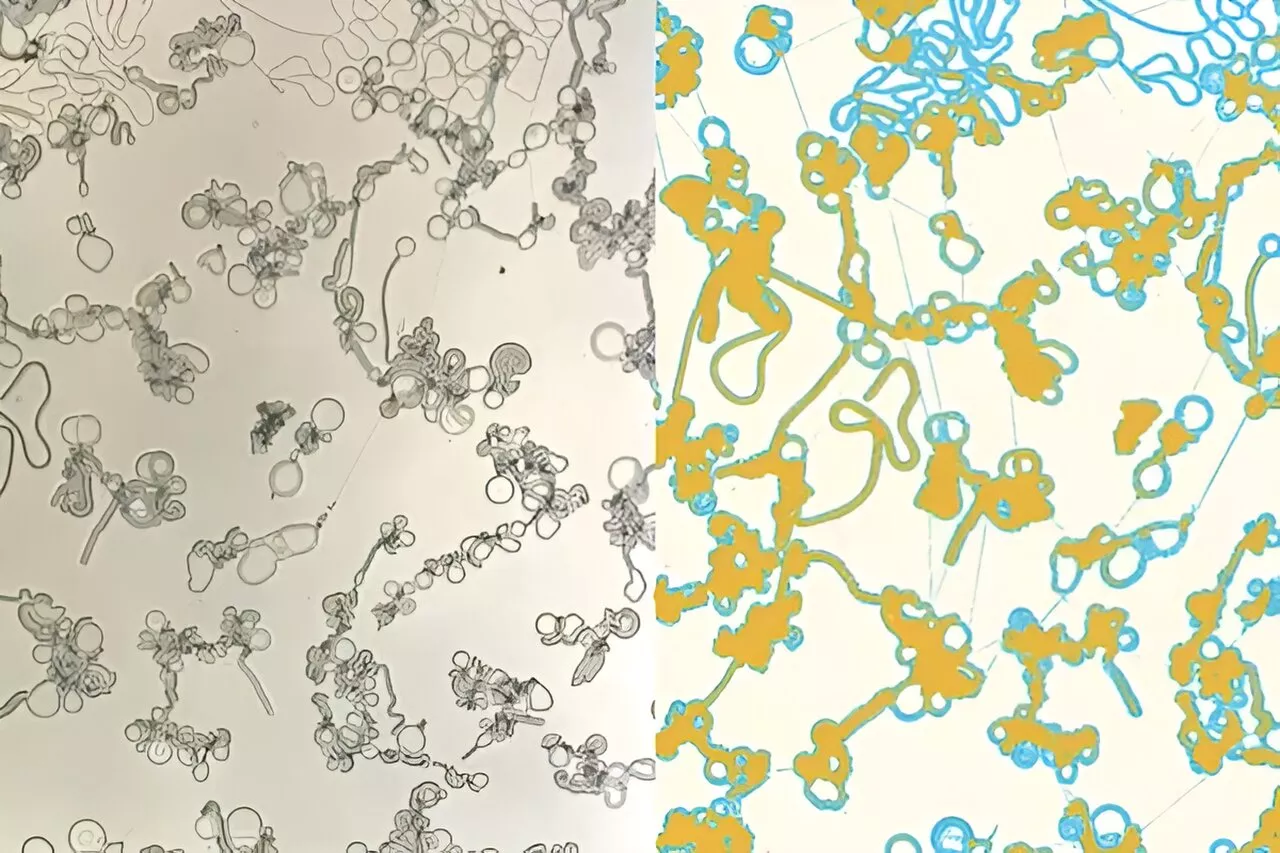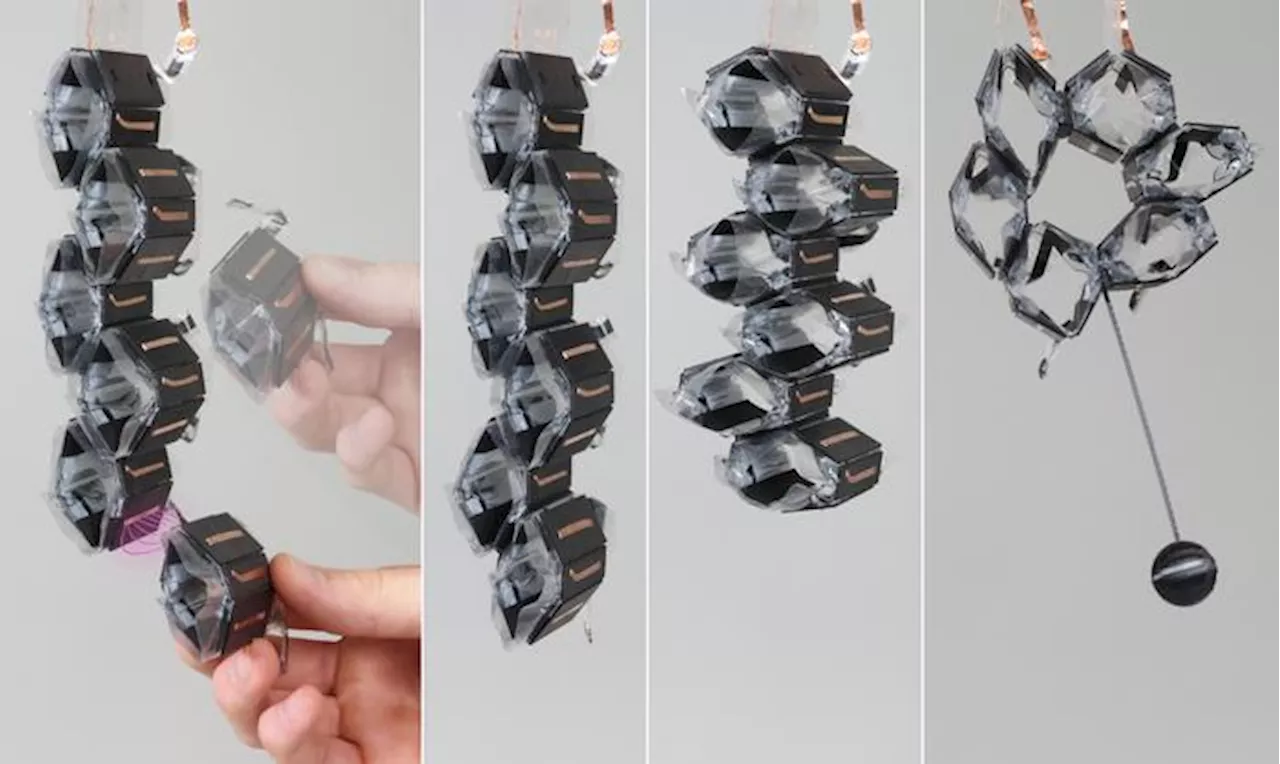Space and astronomy news
Researchers have developed a set of hexagon-shaped robotic components that can be snapped together into larger and larger structures. Each one of the component hexagons is made of rigid plates that serve as its exoskeleton. Driven by electricity, the plates can change their shape, shifting from long and narrow to wide and flat at high speed.
The design team integrated artificial “muscles” into the inner joints of the hexagons, called hydraulically amplified self-healing electrostatic muscles. Applying a high voltage to the module causes the muscle to activate, rotating the joints of the hexagon and changing its shape from long and narrow to wide and flat.
The modules are reconfigurable, with an easy process of attaching or detaching the modules. Chains of modules can be rapidly connected and can operate from one voltage source. The modules can each have their own behaviors, which allows for various operations.
South Africa Latest News, South Africa Headlines
Similar News:You can also read news stories similar to this one that we have collected from other news sources.
 Scientists made a stretchy new material that could lead to shape-shifting airplanesA new ultra-strong stretchy metal could open the door for various engineering marvels, like shape-shifting aircraft.
Scientists made a stretchy new material that could lead to shape-shifting airplanesA new ultra-strong stretchy metal could open the door for various engineering marvels, like shape-shifting aircraft.
Read more »
 Hexagonal electrohydraulic modules shape-shift into versatile robotsScientists at MPI-IS have developed electrically driven robotic components, called HEXEL modules, which can snap together into high-speed reconfigurable robots. Magnets embedded along the outside of the modules allow them to electrically and mechanically connect to other modules, forming robots with diverse shapes and capabilities.
Hexagonal electrohydraulic modules shape-shift into versatile robotsScientists at MPI-IS have developed electrically driven robotic components, called HEXEL modules, which can snap together into high-speed reconfigurable robots. Magnets embedded along the outside of the modules allow them to electrically and mechanically connect to other modules, forming robots with diverse shapes and capabilities.
Read more »
 Saura Lightfoot-Leon And Joseph Quinn Mimic A Bullfight In Hoard ClipHoard Clip Thumbnail
Saura Lightfoot-Leon And Joseph Quinn Mimic A Bullfight In Hoard ClipHoard Clip Thumbnail
Read more »
 Researchers Mimic Extracting Energy From Black Holes in the LabSpace and astronomy news
Researchers Mimic Extracting Energy From Black Holes in the LabSpace and astronomy news
Read more »
 Plants May 'See' to Mimic Neighboring Leaves, Ig Nobel Prize Winner ClaimsA Japanese researcher has won an Ig Nobel prize for his research suggesting that plants may be able to 'see' and mimic the shapes of their neighbors. His experiment involved growing real plants near artificial plants with different leaf shapes, observing that the real plants adapted their shape to resemble the plastic ones.
Plants May 'See' to Mimic Neighboring Leaves, Ig Nobel Prize Winner ClaimsA Japanese researcher has won an Ig Nobel prize for his research suggesting that plants may be able to 'see' and mimic the shapes of their neighbors. His experiment involved growing real plants near artificial plants with different leaf shapes, observing that the real plants adapted their shape to resemble the plastic ones.
Read more »
 Beyond displays: Liquid crystals in motion mimic biological systemsLiquid crystals are all around us, from cell phone screens and video game consoles to car dashboards and medical devices. Run an electric current through liquid crystal displays (LCDs) and they generate colors, thanks to the unique properties of these fluids: rearrange their shape, and they reflect different wavelengths of light.
Beyond displays: Liquid crystals in motion mimic biological systemsLiquid crystals are all around us, from cell phone screens and video game consoles to car dashboards and medical devices. Run an electric current through liquid crystal displays (LCDs) and they generate colors, thanks to the unique properties of these fluids: rearrange their shape, and they reflect different wavelengths of light.
Read more »
